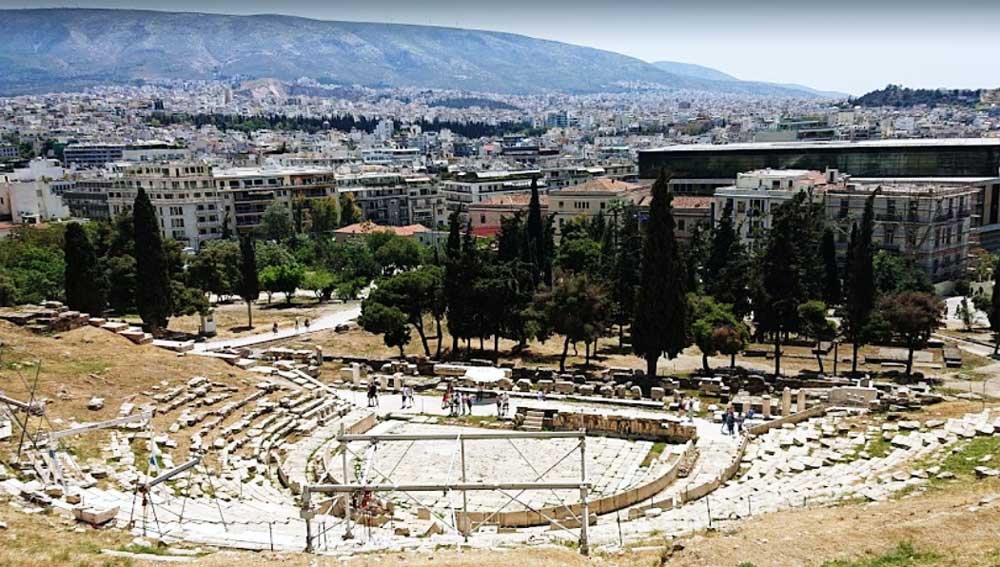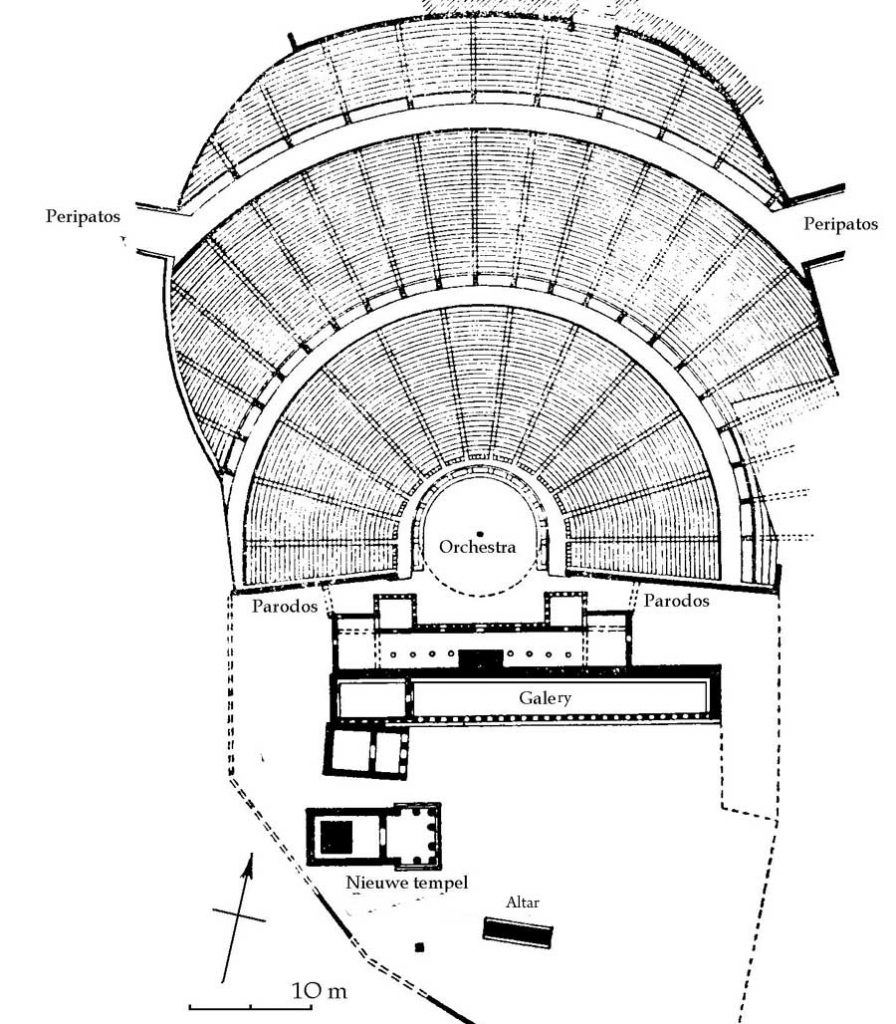Theatre of Dionysus in the south slope of the Acropolis
The Theater of Dionysus in Athens is one of the theaters of ancient Greece, considered the first theater in the world, the cradle of ancient Greek theater and tragedy. It is located on the southeast slope of the Acropolis of Athens.
The theater owes its name to Dionysus, god of wine. The great festivals of the Dionysia were held there every year in his honor. These were initially ritual songs, dances and ritual sacrifices resulting from theatrical performances. This is where the famous classical tragedies of Aeschylus, Sophocles and Euripides were created.

History
The theater dates back to the 5th century BC. At first, it had just a clay orchestra and a stage built of wood, and the spectators sat on the natural slope of the place. Around 420 BC. AD were built wooden bleachers. The stone construction that can be admired today was laid out under Lycurgus between 338 and 326 BC. J.-C. the steps of stone replaced those of wood.
Architecture
The Theater of Dionysus had 78 rows of seats and offered seating for 17,000 spectators. The first row of seats was made up of 67 marble seats with backrests, reserved for the various dignitaries, magistrates, personages of distinction, referees of the contest: this is what is called the proedria.
The koilon is arranged in a semicircle around the orchestra, where the dances and songs of the choir took place. In the middle of the orchestra was placed an altar, on which the victims were presented to the gods. The actors moved around on the proskenion, behind which was the stage building. The paraskenia, on the sides of the skènè, comprised eight Doric columns.

